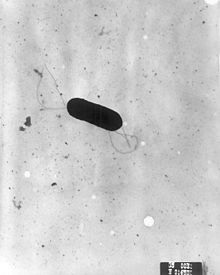Antilisterial
| Listeria | |
|---|---|
 |
|
| Scanning electron micrograph of Listeria monocytogenes. | |
| Scientific classification | |
| Domain: | Bacteria |
| Division: | Firmicutes |
| Class: | Bacilli |
| Order: | Bacillales |
| Family: | Listeriaceae |
| Genus: |
Listeria Pirie 1940 |
| Species | |
|
L. aquatica |
|
L. aquatica
L. booriae
L. cornellensis
L. fleischmannii
L. floridensis
L. grandensis
L. grayi
L. innocua
L. ivanovii
L. marthii
L. monocytogenes
L. newyorkensis
L. riparia
L. rocourtiae
L. seeligeri
L. weihenstephanensis
L. welshimeri
Listeria is a genus of bacteria that, until 1992, contained 10 known species, each containing two subspecies. As of 2014, another five species were identified. Named after the British pioneer of sterile surgery Joseph Lister, the genus received its current name in 1940. Listeria species are gram-positive, rod-shaped, and facultatively anaerobic, and do not produce endospores. The major human pathogen in the Listeria genus is L. monocytogenes. It is usually the causative agent of the relatively rare bacterial disease listeriosis, a serious infection caused by eating food contaminated with the bacteria. The disease affects pregnant women, newborns, adults with weakened immune systems, and the elderly.
...
Wikipedia
